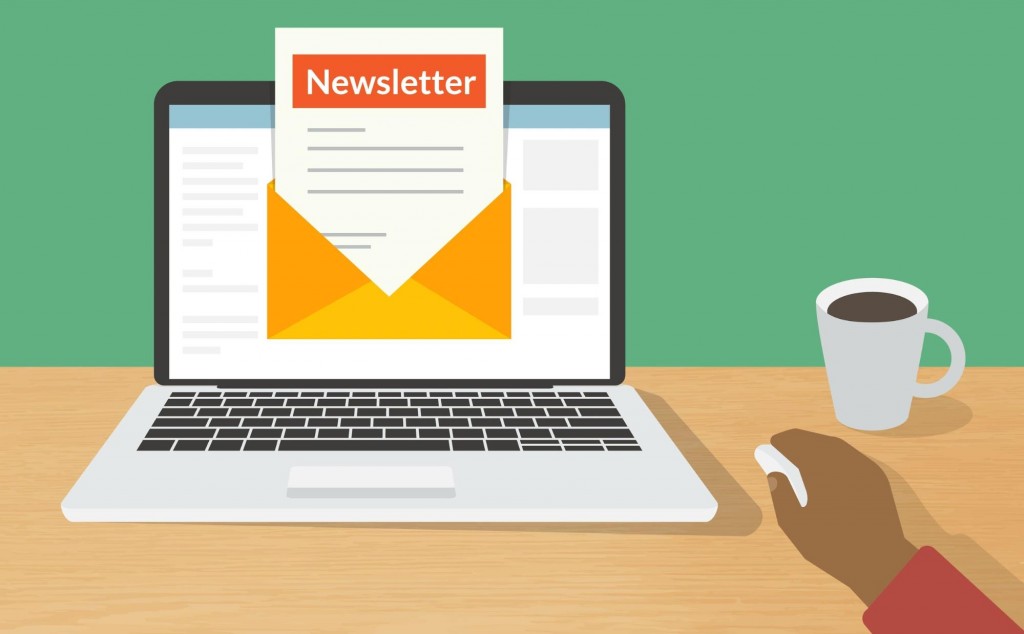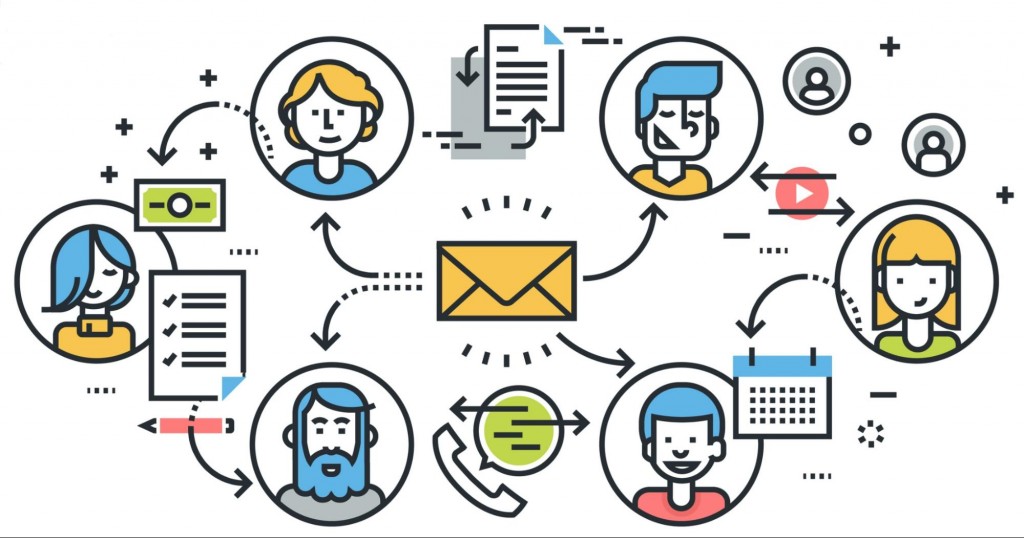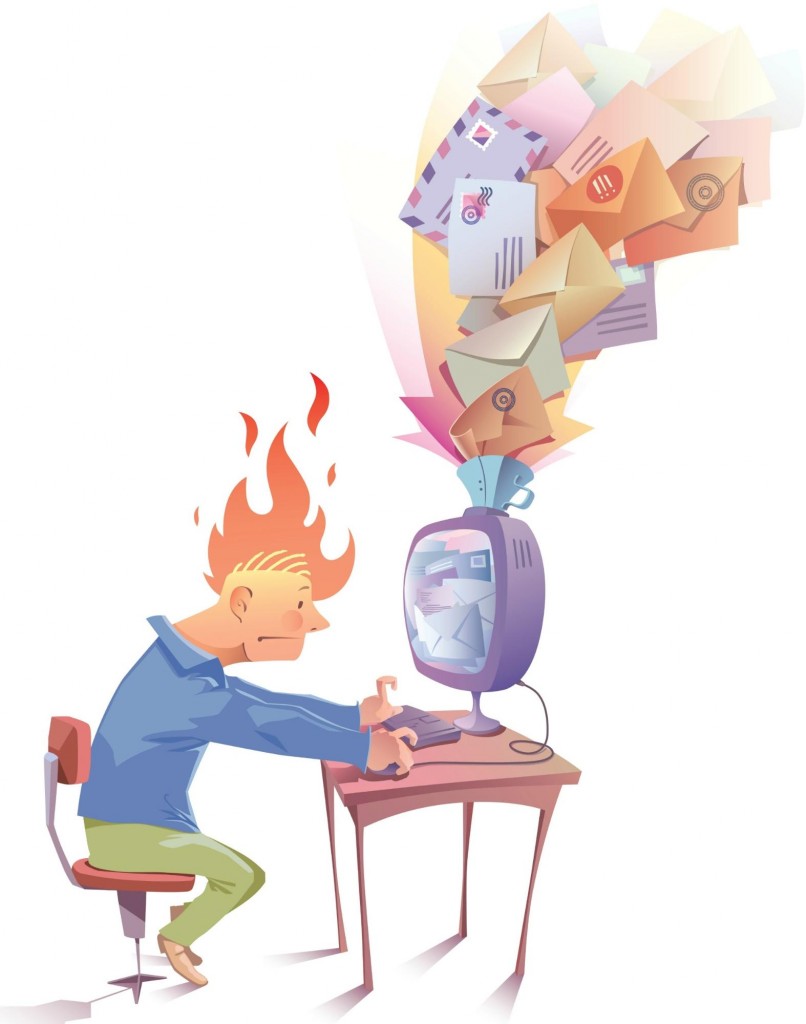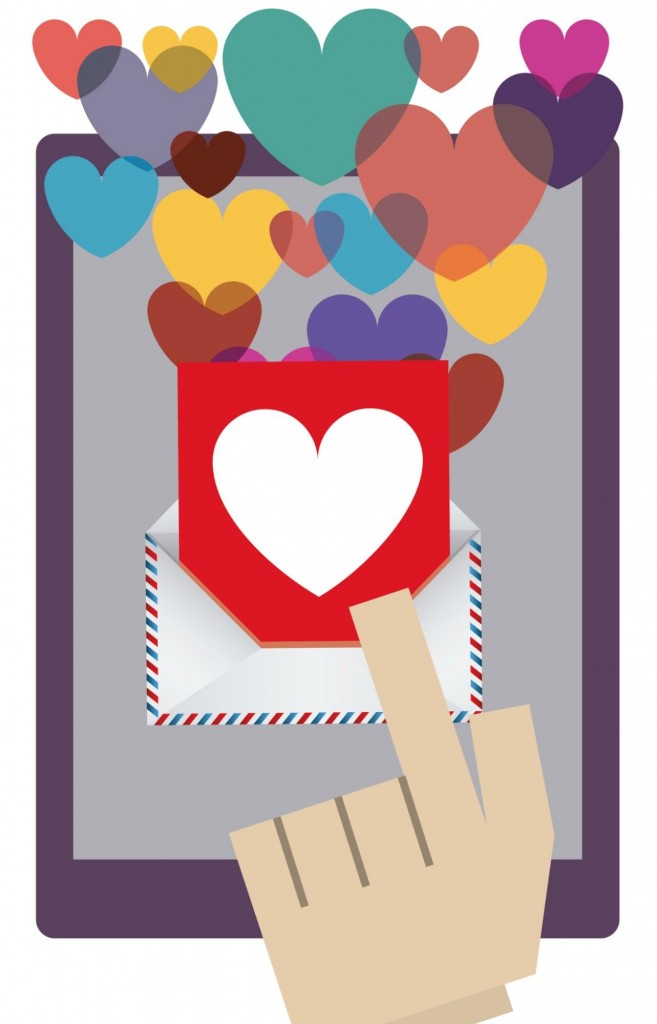
You’ve done it. You wrote a great little e-book and you’re giving it away for free when people subscribe to your newsletter. You’ve got their name and email address, and you know that newsletters are an important way of marketing.
Now what?
Now you need to write your newsletter.

You know you should do it. You hear it all the time – “Building your list and sending regular newsletters is the most important marketing tactic you can use.”
You know it – but do you feel it?
Maybe not. Many people regard newsletter-writing as a chore they have to do every month. They don’t know what to write, they don’t know how to write it – they don’t even know whether it’s worth the trouble.
Is that you?
If it is, don’t despair. Together, we’re going to work on a way you can get pleasure from writing a good quality, useful email newsletter which makes you money and which your readers love.
We have a handy questionnaire for you to fill in as you read through the article. It’ll help you work out what’s stopping you from engaging with your newsletter, and what will work best, both for you and for your subscribers.
Got the questionnaire? Great. Let’s get started.
Section 1: Whether to Write a Newsletter
“Succeeding in business is all about making connections.”- Richard Branson
Tweet This
Do you think emails are dead? When social media makes it so easy to communicate with your customers, is spending time on newsletters important any more?
Let’s look at the evidence.
- 72% of consumers across all age groups say they prefer to receive marketing-related messages via email(1).
- 61% say they like to receive promotional emails weekly, and 28% want them even more frequently(1).
- 81% are more likely to buy products if they’ve previously received personalized emails about products(1).
- 78% say reading email is the activity they most like to do on their smartphone(2).
- 66% of consumers in the US have made a purchase online as a direct result of an e-mail marketing message(2).
- The average newsletter return on investment is $44 per $1(3).
Yep – it’s worth it! Newsletters spread the word about your business.

Yes, social media is important – but not in isolation. Use it to grow your email list: Tweet a newsletter release, use a Facebook tab or a post to promote your opt-in page. But listen to conversations your customers are having across all platforms.
Sometimes, social media can be an excuse – “there’s no point doing newsletters, I speak to my customers on Facebook.” Don’t fall into that trap. A well written, targeted newsletter is as relevant now as it ever was.
Whatever you do, don’t ignore it.
Section 2: When to Write Your Newsletter
Now that we’ve got over the ‘whether to’ hurdle, let’s approach the next obstacle and jump that one too.
a) How Is Your Concentration Span?
Whatever it is, work with, not against it. And don’t feel bad about it. If it’s short, it’s short.
Looking at your questionnaire again, did you check 15 minutes? Fine! Plan to write your newsletter in 15 minute blocks – but make sure there are no interruptions.
Turn your cell phone to flight mode. Close all your social media tabs, and your emails – those little ‘dings’ telling you there’s a new post or mail are a huge distraction.
There are plenty of free timer apps available – download one, or use your kitchen timer. Set it for however long you’ve defined as your concentration span. When it goes off, move away from the computer for 5 minutes. When those 5 minutes are up, do another session. Occasionally take a longer break – 15 minutes, say.
Repeat that pattern until your newsletter is finished. You’ll find that using concentrated blocks of time increases both your concentration levels and your output, and before you know it – your newsletter’s done.
b) Frequency
 No-one likes to get too much mail! But how to tell when it is too much for your customers?
No-one likes to get too much mail! But how to tell when it is too much for your customers?
Looking at the questionnaire again, consider the final two parts of Section 1. Does the time you have available match the expectation your audience may have about frequency, or are they poles apart?
Many consumers like to receive a newsletter every week – some, more often (see above). You may be more successful sending a short newsletter once a week rather than ‘War and Peace’ once a month.
Remember: readers’ attention span, whether on your website or in a newsletter, is limited. Generally speaking, shorter is better.
But that’s not true of all niches. The best practice is the practice that works best for your audience.
So – how to tell?
Here’s a thought – ask them! One of the advantages of having an email list is the ability to find out exactly what the people who’ve signed up want. How often, how long, what content. Use a simple questionnaire – if possible, one your email provider recommends.
SurveyMonkey(5), for example, integrates with MailChimp (which SBI! supports), and it’s free if you ask no more than 10 questions to 100 people (or fewer).
Aweber (which is also supported by SBI!) does not currently have an integrated survey system, but you can link to a SurveyMonkey questionnaire within your newsletter.
As well as giving you valuable information, asking for an opinion encourages engagement and involvement. It makes people feel special. It’s so simple, but so rarely used.
c) Planning When to Write Your Newsletter
You’ve decided on a day, or days. You know how long you can concentrate for, and how often you’re going to send your newsletter.
Congratulations!
Now, take all the information you’ve just gathered and schedule the next three months’ newsletter-writing sessions in your diary before you move on.
Take the day on which it should go out and work backwards. Plan to start writing at least three days before it’s due so you have plenty of time to proof-read and test, and between four and six hours’ writing time if it’s your first ever newsletter.
You’ll be able to gauge how much time you need more accurately once you’re more used to writing them.
Don’t move on until those dates are firmly in your diary!
Section 3: How to Write Your Newsletter
You know when you’re planning to write your newsletter. Now you need to look at what’s stopping you.
Refer back to Section 3 of your questionnaire. What does it tell you? Are the things you’ve checked real problems, or excuses? You’re already committed to writing content for your website, so these concerns may not apply to you. If that’s the case – move on to Section 4.
If there are problems for you here, though, let’s deal with them one by one.
a) Finding a Quiet Place
In a busy home this can be a real struggle. We looked at how to balance a job, family and online business in another article – if this applies to you, you may want to get some ideas there, too.
The timing may be important – refer back to Section 1, and make sure you’ve chosen a time when the house is likely to be quiet.
If that means getting up an hour earlier, so be it. If it means turning off your favorite soap – do it! Your newsletter is likely to bring a much better return on your time.
If you really can’t find a time and place within your own home, look outside. Can a friend offer a quiet space? What about your local library?
b) You Think It Won’t Be Good Enough
Being a perfectionist is often an excuse for procrastination.
Tweet This
Consider this: a ‘not good enough’ newsletter is better than no newsletter at all. Life isn’t perfect – why should your newsletter be? You’re doing your customers a disservice by waiting for the perfect time, the perfect content, the perfect design.
Just do it. Make it as good as you can, but don’t stress over it and don’t over-think it. Plan, write, and send. No-one but you is going to think it’s not good enough – and you’ll get better with practice!
c) The Design’s Not Right
Your newsletter provider should have a series of templates. Certainly if you’re using either MailChimp or Aweber, theirs are drag-and-drop.
Choose a simple template, or create your own – the cleaner, the better. Don’t go for multi-columns – you’re not writing for the New York Times – and remember, many people now open emails on a mobile device(4), where complex layouts don’t work well.
Take a plain template and brand it. Keep the same colors as your website palette, use the same logo and, if possible, the same or a similar header.
The most important issue here is that it must be a responsive, mobile friendly design. After you’ve written it, send yourself a test and open it on as many different devices as you can.
Not got a selection of devices? Ask friends and family to help out.
d) You Don’t Know What Your Audience Wants to Read About
Your website statistics tell you which content is the most visited on your site, and if you have an active social media presence you’ll know what your followers respond well to. Use tools like Facebook’s ‘Insights’ or Twitter’s Analytics to assess your most popular topics.
Nor should it be a problem if you have a bricks and mortar or service-based business. What questions are you most frequently asked? What problems do people most regularly come to you with?
And again – ask your customers through your newsletter. You don’t need a questionnaire for this – tell your readers to hit the reply button (but be prepared for the avalanche of responses!)
e) You Have Writer’s Block and Don’t Know Where to Find Content

Don’t leave this until the last minute. Plan ahead.
How?
Open a folder on your hard drive – do it now! Head it ‘Newsletters’. Once you decide what your content should be, create sub-folders. Put links to your own new pages into a folder. Create another one for external information, another for questions you’ve been asked, another for making note of hot topics in Forums you visit.
Now, when you come to write your newsletter, you have a ready made store of ideas. Choose just two or three per newsletter – don’t overdo it!
Which takes us nicely into our next section.
Section 4: What to Write in Your Newsletter
You know the drill. Go back to your questionnaire. What are your goals? What do you like and dislike about newsletters you’ve signed up for? Use that information to shape your content.
If you haven’t signed up for anyone else’s newsletters, do. It can be quite an eye-opener. Reading others, both within your niche and outside it, can open your eyes to what works and what doesn’t.
There’s evidence that these are the four most important issues for those receiving newsletters. They should be:
a) Personalized: ensure your email provider allows for personalizing by enabling the customer’s first name to be included wherever you decide it’s appropriate. The email subject line and newsletter welcome message are obvious points.
b) Focused: know what the hot topics in your niche are. Use forums, books, social media to keep abreast of what’s worrying your audience, what problems or needs they have, and think about the solutions you could offer in your newsletter. It doesn’t need to be a lengthy article. it might be a simple tip, or a link back to a web page.
In terms of your own focus, always keep your goals in mind. Just as your website pages should each have a ‘Most Wanted Response’, so should each newsletter.
If your goal is…
- to lead back to your website, include a short, engaging paragraph with a ‘read more’ link to the full article. Make sure it’s at the top of your newsletter if that’s your most wanted response.Don’t use images as links – not all emails open them. And don’t just add a link and forget it – use your provider’s statistics to help you understand which links work well.
- to increase awareness of your brand, be consistent in sending regularly.
- to encourage loyalty, make your readers feel special. Provide high quality information which they won’t get anywhere else – including on your website.
- to promote products, think about having a ‘Product of the Month’ slot. Use the newsletter to tease a link back to a sales page on your website. Be very careful about how often you sell in a newsletter, and how you do it. One of the main reasons people unsubscribe is feeling they’re being bombarded with products they neither want nor need. Again, know your audience.
Only recommend products that you genuinely think your readers are looking for, and certainly do not sell in every newsletter – a rule of thumb is no more often than once in every four or five.
Consider whether it’s worth having an occasional ‘direct sales’ email, rather than selling within your regular newsletter. This only works, though, if they are few and far between so that your audience knows that, when they get them, it’s because you really value whatever it is you’re selling.
Important: when promoting affiliate products, check very carefully the terms and conditions of both your email provider and the affiliate program. In some cases, it is against the company’s terms and conditions. Amazon, for example, is very clear in saying, “It is not permitted to bookmark your links, send them in e-mails/newsletters, post in your Kindle books, or use them in any other offline manner.”
c) Relevant: if you enjoy writing about your family or personal situation, make sure it’s relevant to the content of your newsletter. Got a website about cats? Write about what your cat’s been up to since your last update. Is your cafe the subject of your newsletter? Write about events in the local area.
But avoid the temptation to write about your elderly aunt’s lumbago. It’s unlikely to hook anyone into wanting to open your next newsletter.
d) Interesting: remember – you are not writing for yourself. You’re writing to interest your audience.
How can you capture and maintain their interest? Solve a problem. Include a “tip of the week” which isn’t available on your website.
Think seasonally. Look ahead to upcoming holidays for both content and potential product sales. Create site pages to link back to. Plan for these at least three months in advance.
Make people want to open your next newsletter by giving away some, but not all, of the information. Save the rest for next time – and set the bait by adding a sentence which promises more. Think of your favorite soap – leave them on a cliffhanger!
Don’t forget subtitles and images as a source of interest. Just as with your website content, they lead the eye down the page and provide a break between blocks of text.
And Finally: the Beginning, and the End
Subject line: because your newsletter is going out in email form, the subject line is critical. Spend time over it. Make it personal by adding their first name. Keep it short, but interesting. Don’t try to be too clever. As with the rest of the newsletter, simple works best. Tell your readers what to expect, then make sure the content matches the subject line.
Signing off: make this personal too – it’s your final opportunity to connect with your reader and should reinforce the whole tone of your newsletter. Are you writing in a formal or informal style? Are you targeting professionals, or stay-at-home moms? Your final sign-off should reflect your target audience.
Got a site about yoga? How about ending your newsletter with something as simple as “Until next time, may your days be calm and your life, a haven of peace”? Or a travel site? What about using a Clint Eastwood quote: “Keep your eyes on the horizon, and your nose to the wind!”
And how about adding a photo of yourself? It lets readers know they’re talking to a real person.
What about adding a signature? There are online resources(6) which offer a variety of fonts, styles and colors. Download as a .png or .jpg and add to the end of your newsletter.
Don’t forget the value of a P.S.: this can be a powerful call to action. Most people scan through text; when they reach the end, catch their attention before they click away. Make the font stand out – italics may work well. Or add a small image or icon.
Some possibilities are:
- Tease your next newsletter.
- Add links to one or two of your social media platforms.
- Advertise your latest ebook/course/webinar.
Proofing: ask someone else to read through your newsletter – it’s easy to miss the simplest mistakes. And always send a test to yourself – both MailChimp and Aweber allow for this.
Hitting the send button: when to send your newsletter will depend on your niche. Use Facebook Insights to get an idea of when they’re most likely to be online, but initially send at different times to test which works best.
Once you’ve found a spot which coincides with the best open rate, stick to it. Be consistent. Train your readers to expect to hear from you on a certain day and use your provider’s scheduling option to set the email to be sent on that day.
Summary
There’s really no need to stress about writing newsletters. As ever, planning and knowing your audience are key, as is knowing yourself!
You write content on your website and, hopefully, enjoy it. Look at newsletters in the same way because, no matter what goal you’re trying to achieve, newsletters, too, are content.
Create an interesting newsletter full of useful information which answers questions and provides solutions, leads readers back to your site, increases brand loyalty, gets you known as an expert in your niche and, occasionally, sells.
But, most of all – enjoy it! Planning ahead means newsletters need not be a chore. Communicate your passion for your niche. Let your personality shine through. Reach out with the excitement you feel for your subject, and your audience will wait excitedly for you next issue.
And that, for you and for your readers, is a win-win.

Sources
1. Marketing Sherpa: Email Summit, 2015. Includes a 32 minute email marketing video.
2. Harris Interactive, 2013.
3. Marketing Sherpa: Email Marketing ROI.
4. Facebook/IDC: Always Connected.
5. SurveyMonkey for Mailchimp. The free version allows up to 10 questions to be sent to 100 people.
6. My Live Signature. A free online resource to create your own signature and download as a .png.
Further Information
MailChimp: Common Rookie Mistakes. A short but informative article listing the ten most common reasons people unsubscribe from an email list.
MailChimp: Mobile Friendliness. Tips for making sure your newsletters are responsive.
Social Media Examiner: Email and Social Media: Why Marketers Need Both. Podcast.
Aweber: Psychology and Email Marketing. Short video about the balance between newsletter informational and sales content.
Cath Andrews
Latest posts by Cath Andrews (see all)
- Start a Passion-Based Business and Live Your Dream - February 1, 2023
- What Do You Say When Their Eyes Glaze Over? - December 20, 2021
- How to Monetize Your Email List in 5 Simple Steps - October 26, 2021

